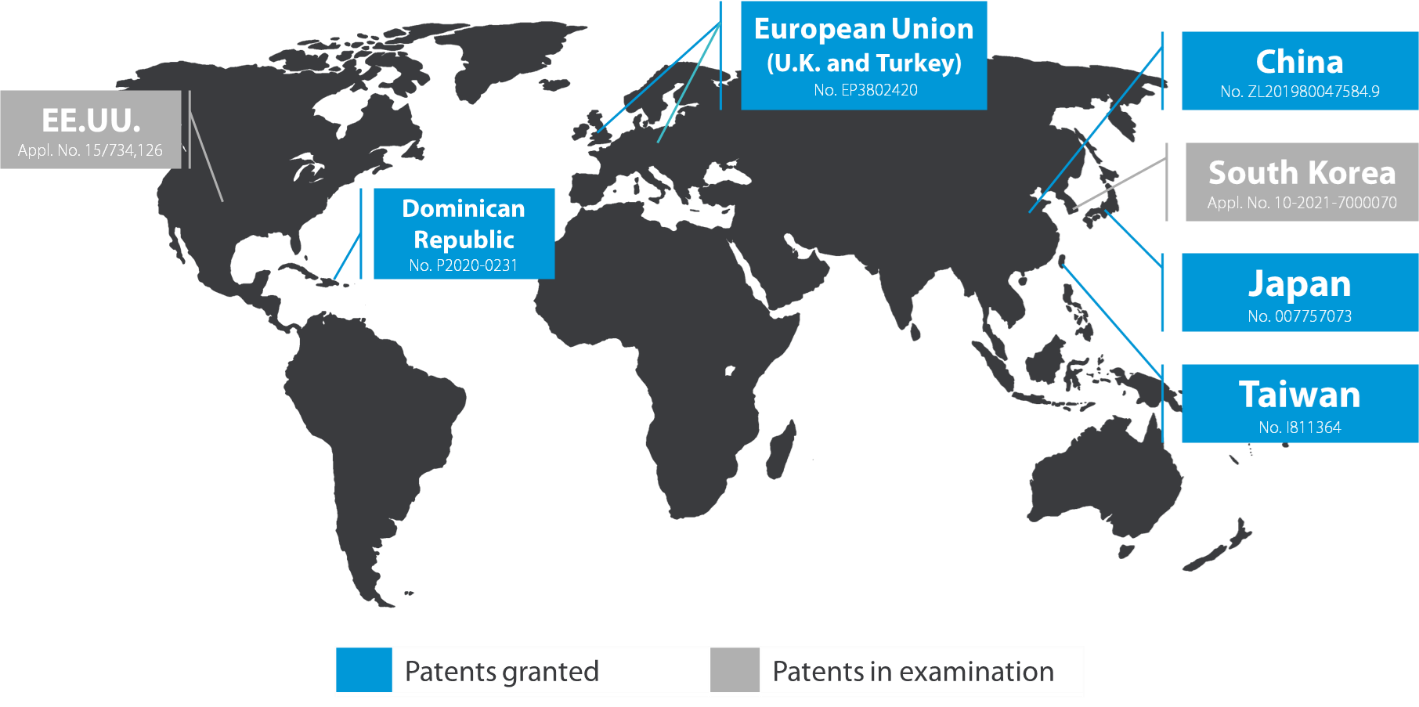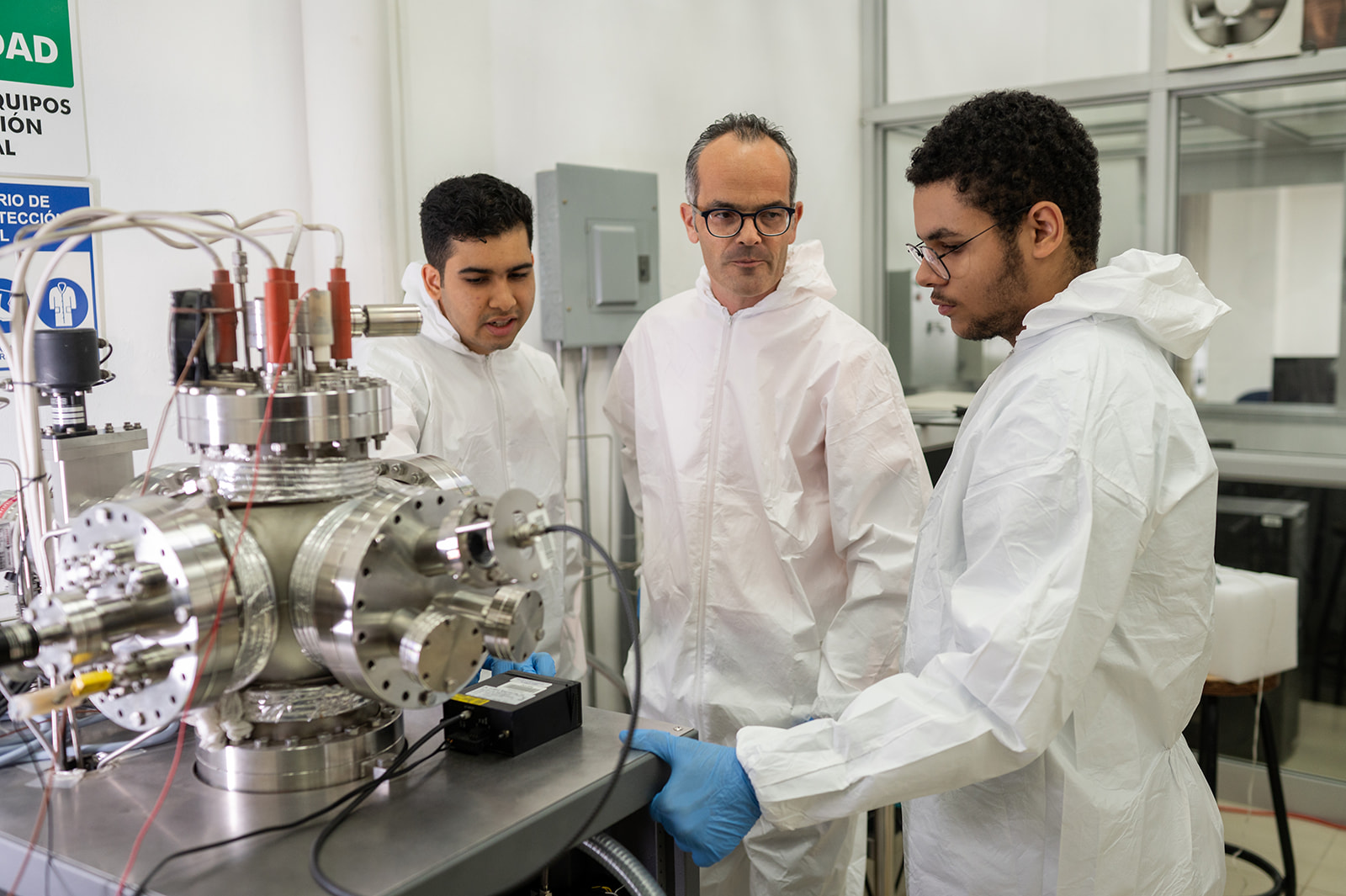2D DIAMOND
The PUCMM has pioneered the synthesis of 2D Diamond
The PUCMM Nanoscience Laboratory has pioneered the synthesis of 2D diamond, a two-dimensional material that represents the thinnest possible layer of diamond. Currently, we are investigating its potential application in the manufacturing of future microprocessors.
We are exploring the replacement of the tantalum nitride barrier and tantalum coating with a 2D diamond sheet, which could free up to 3 to 4 nm for copper. This change could mean a considerable reduction in the resistance of local interconnects in integrated circuits.
Video in Spanish 2D Diamond
Currently, the speed of microchips is being limited by metallic interconnects, which is known in the semiconductor industry as the RC challenge. New materials are necessary to improve the performance of metallic interconnects. Among the materials explored worldwide, there are some two-dimensional (2D) materials such as graphene, h-BN, MoS2, WSe2 or TaS2. The PUCMM R&D project aims at investigating and developing a solution based on a new 2D material: 2D diamond.
The solution we have set out to research and develop suggests replacing the tantalum nitride barrier and tantalum coating with a 2D diamond sheet. In this way, between 3 and 4 nm of space could be freed up for copper wires. This change could mean a considerable reduction in the resistance of copper local interconnects in an integrated circuit.

2D diamond properties:
- Dielectric material with low dielectric constant (k < 2.5)
- Very good copper diffusion barrier
- High adhesion strength on copper
- Does not require any barrier nor coating
- Low leakage current - high breakdown voltage
- Very high thermal conductivity
- High hardness - high in-plane stiffness
- Produced by a nearly net-shape technology
- Material and production processes are safe and compatible with sustainable development
Intellectual Property
Various patents are granted or filled worldwide for 2D diamond. Its protection includes the material itself, its production method and its use.

Nanoscience Lab

The PUCMM Nanoscience Laboratory was created in 2010 to research nanomaterials. Since its origin, it has developed various scientific projects that have generated dozens of scientific publications in high-impact journals and twelve invention patents worldwide.
This laboratory has received support from the Ministry of Higher Education, Science and Technology of the Dominican Republic and several international organizations such as the French National Research Agency, the French National Centre for Scientific Research (CNRS), the U.S. Office of Naval Research Global and the Southern Office of Aerospace Research & Development.
Its team of researchers has included collaborators from other universities and research centers in the world such as the CNRS and INSA in France, The University of Puerto Rico in Puerto Rico and the University of Manitoba in Canada..
More than 30 students have been trained in this laboratory, some of whom earned Ph.D. degrees in European universities.
Scientific Leadership

The Nanoscience Laboratory is led by Fabrice Piazza, French-Dominican physicist, PUCMM Associate Professor. Dr. Piazza is a graduate of the Louis Pasteur University, Strasbourg, France (2001). He was a Research Associate at the University of Cambridge in England (2001-2004) and at the University of Puerto Rico (2004-2006). He has led scientific research on 2D diamond since its conceptualization at the end of 2013. Only on 2D diamond, he has 7 publications, which have received more than 252 citations (according to Google Scholar), 5 invention patents and several pending applications for approval. He provided several prototypes to the industry (i.e. Philips and SIDEL through the European project FAMOUS IST-2000-28661; Radstone Technology and InterCast Europe through the European project BriteEuram DIAMCO BRPR980749).
Scientific Publications
- Low temperature, pressureless sp2 to sp3 transformation of ultrathin, crystalline carbon films, Fabrice Piazza, Kathleen Gough, Marc Monthioux, Pascal Puech, Iann Gerber, Richard Wiens, Germercy Paredes, Cristhofer Ozoria, Carbon 145 (2019) 10-22.
- Towards a better understanding of the structure of diamanoids and diamanoid/graphene hybrids, F. Piazza, M. Monthioux, P. Puech, I. Gerber, Carbon 156 (2020) 234-241.
- Raman evidence for the successful synthesis of diamane, F. Piazza, P. Puech, I. Gerber, K. Cruz, M. Monthioux, Carbon, 169 (2020) 129-133.
- Progress on Diamane and Diamanoid Thin Film Pressureless Synthesis, Fabrice Piazza, Marc Monthioux, Pascal Puech, Iann C. Gerber, Kathleen Gough, C 7, 9 (2021).
- Ultra-Thin Carbon Films: The Rise of sp3-C-Based 2D Materials? Fabrice Piazza, Marc Monthioux, C 7, 30 (2021).
- Combining low and high electron energy diffractions as a powerful tool for studying 2D materials, Pascal Puech, Iann C. Gerber, Fabrice Piazza, Marc Monthioux, Applied Physics A 127, 485 (2021)
- 2D (< 10 nm) sp3-C-rich carbon materials, possibly hydrogenated: A review Fabrice Piazza, Marc Monthioux, Pascal Puech, Carbon Trends 9 (2022) 100219. https://doi.org/10.1016/j.cartre.2022.100219
